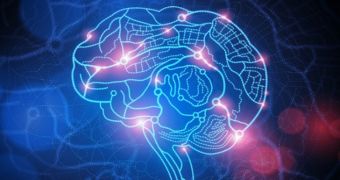A couple of days ago, the Defense Advanced Research Projects Agency (DARPA) in the United States went public with the news that it had decided to part with $37.5 million (€27.5 million) and hand the money over to a bunch of scientists.
Mind you, the $37.5 million is not a really early and disturbingly generous Christmas present. On the contrary, the brainiacs whom DARPA bestowed its good graces on are expected to use the money to develop memory restoration devices.
Specifically, the funds will serve to carry out investigations into how memories are formed and then retrieved in the human brain. The end goal is to develop implantable electrical devices that can replicate these processes.
In a press release on the matter at hand, DARPA explains that, should all go well, such devices could one day be used to help people who are experiencing memory deficits as a result of severe brain trauma or disease.
Information shared with the public says these implantable devices are to be developed as part of a program dubbed Restoring Active Memory (RAM, for short). The program is expected to first and foremost benefit servicemembers and veterans.
“We owe it to our servicemembers to accelerate research that can minimize the long-term impacts of their injuries. Despite increasingly aggressive prevention efforts, traumatic brain injury remains a serious problem in military and civilian sectors.”
“Through the Restoring Active Memory program, DARPA aims to better understand the underlying neurological basis of memory loss and speed the development of innovative therapies,” explains DARPA Program Manager Justin Sanchez.
The $37.5 million in funding that DARPA announced this past July 9 is to be split between researchers with the University of California, Los Angeles, and the University of Pennsylvania. The first will get $15 million (€11 million), whereas the latter is to receive $22.5 million (€16.5 million).
As part of this research project, scientists will first study the human brain and pin down the neural signals that are involved in creating memories and retrieving them under certain circumstances. They will then resort to targeted stimulation to recreate the neural signals' work in the brain.
When all is said and done, the researchers are expected to come up with devices that can deliver such targeted stimulation to the brain of one patient or another and thus restore memory function in the aftermath of brain injury or disease.
“The start of the Restoring Active Memory program marks an exciting opportunity to reveal many new aspects of human memory and learn about the brain in ways that were never before possible,” says DARPA Program Manager Justin Sanchez.
Furthermore, “Anyone who has witnessed the effects of memory loss in another person knows its toll and how few options are available to treat it. We’re going to apply the knowledge and understanding gained in RAM to develop new options for treatment through technology.”

 14 DAY TRIAL //
14 DAY TRIAL //